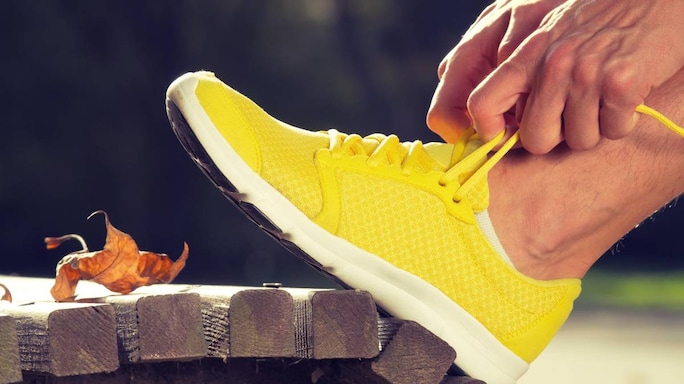- HOME
- /
- Health & Wellness
- /
- Fitness
- /
Cover That Extra Mile Easily With A Pair Of Running Shoes
These shoes offer good grip and adequate comfort
 Photo: Shutterstock
Photo: Shutterstock
A pair of running shoes can be your trusted companion while jogging or exercising. They offer stability, cushioning and a proper distribution of weight so that you can get a good grip and move about freely.
Running shoes are designed to provide traction on different surfaces. Some of them are also great shock-absorbers. Most importantly, these shoes protect your feet and soles from painful injuries as you run that extra mile.
Factors to consider
The shape and the size of your feet are the two primary factors that should determine your choice of shoes. Go for the right fit—one that doesn’t leave your feet feeling too cramped for space or too loose.
You should also note that running shoes do not last for an indefinite period. As a rule, experts recommend retiring a pair of shoes after completing 300 miles to 500 miles (roughly between 500 km and 800 km) in them.
If you hit the road often, you can consider buying sports shoes or sneakers. However, check for the right thickness of the material under the mid-sole; also gauge its firmness so that your feet can avail the benefits of adequate cushioning.
For gym workouts, flexible, well-cushioned cross-training shoes that allow for sufficient movement are recommended. Go for one with a superior grip that facilitates leg-based exercises and doesn’t put too much strain on the calf muscles.
For jogging, lightweight running shoes can be a good choice as long as they provide the right grip.
When should you change your shoes?
Warning signs that your shoes have outlived their usefulness include:
- Foot aches, blisters, soreness after completing runs
- An unusual hardness/toughness in and around the midsole area
- Worn-out treads (the portion of the sole that remains in contact with the ground)
You would do well to heed these signs and replace your shoes rather than run the risk of a serious, long-term injury.






